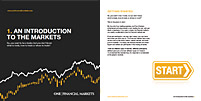

JPM: Taper tantrum in oil is unnecessary
JPMorgan strategists dismissed concerns about the so-called "taper tantrum" in the oil market, asserting that fears are “unnecessary.”
The initial alarm in the market was triggered by OPEC+’s announcement to return oil supply to the market later this year. However, in their note, JPMorgan strategists point out that many key OPEC producers are already operating above their assigned quotas.
In May, OPEC produced an average of 35.6 million barrels per day (mbd), about 1.7 mbd above the production targets set last year. This overproduction has been consistent, with the alliance exceeding agreed limits by 1.5 mbd in the first five months of the year, “highlighting difficulties to get members to follow through on their pledged shares,” strategists noted.
“Looking at shipping data, the group of producers is also exporting more oil than in the second half of 2023, according to data from Kpler,” they added.
The report also notes that while OPEC+ plans to unwind 2.2 mbd of voluntary cuts starting in October, the market conditions will dictate the actual implementation. This, combined with the group's decision to increase production quotas for the UAE, Russia, and Nigeria, led to a net planned increase of 2.5 mbd over the next year.
Despite these plans, J.P. Morgan notes that the likelihood of substantial output return in 2025 is “unlikely,” due to softer market balances and a projected drop in Brent crude to the mid-$60s range.
Moreover, many OPEC members are already operating at or near full capacity. Only Saudi Arabia, Russia, and the UAE have significant spare capacity, with Saudi Arabia holding 55% of OPEC’s current spare capacity, trailed by the UAE with 19% and Russia at 14%.
“We believe 2024 is not the year to focus on market share and assume that both Saudi Arabia and Russia would be willing to roll over their 9.0 mbd quotas through the end of this year, if demand wasn’t strong enough to absorb the barrels,” JPMorgan’s team said.
On the demand side, the bank maintains a healthy outlook. Oil demand grew by 1.3 mbd in Q1 2024, underperforming JPMorgan’s estimates by 600 kbd, “almost entirely due to a warm winter.”
Looking ahead, strategists expect a 1.1 mbd inventory draw in Q3 and a substantial 2.0 mbd decline in global liquid inventories in August, driven by seasonal demand and price-sensitive Chinese buyers taking advantage of lower prices.
The psychological impact of OPEC's intention to increase supply cannot be ignored, but the report suggests that the actual market fundamentals will drive prices. Historically, inventory levels have been a key driver of oil prices, and the anticipated inventory draws this summer “should be enough to get Brent back into the high $80s-$90 range by September,” the Wall Street giant noted.
In 2025, the outlook becomes more bearish. Non-OPEC supply is set to surge by 1.8 mbd, driven by large-scale offshore developments. Coupled with a deceleration in global oil demand growth to 1 mbd, the market is likely to shift into a surplus, pressuring OPEC+ to cut production further to manage the market.
“Our price outlook calls for Brent to average $75 in 2025, sharply down from $83 in 2024, with prices exiting the year at $64,” said the strategists.
Begin trading today! Create an account by completing our form
Privacy Notice
At One Financial Markets we are committed to safeguarding your privacy.
Please see our Privacy Policy for details about what information is collected from you and why it is collected. We do not sell your information or use it other than as described in the Policy.
Please note that it is in our legitimate business interest to send you certain marketing emails from time to time. However, if you would prefer not to receive these you can opt-out by ticking the box below.
Alternatively, you can use the unsubscribe link at the bottom of the Demo account confirmation email or any subsequent emails we send.
By completing the form and downloading the platform you agree with the use of your personal information as detailed in the Policy.






